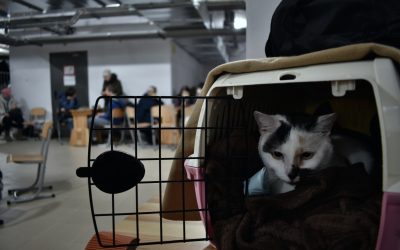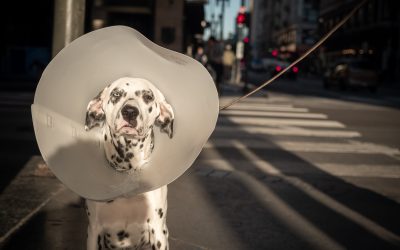Nature’s Blueprints: How Animals Inspire Our World
The relationship between nature and human innovation has been extensively symbiotic through the years, with the natural world serving as a boundless source of creativity to scientists and innovators alike. “Biomimicry” describes the action of designing materials and systems modelled on biological entities and processes. It might surprise you to learn how many revolutionary inventions were inspired by our world around us:
1. Surgical Needles- Mosquitos
Mosquito’s artful biting abilities inspired new surgical needle designs. Minimally invasive, three pronged, polymer needles, inspired by mosquito mouthparts (proboscis) ease painless insertion. Japanese researchers and engineers analysed the components of the proboscis to create imitation needle designs with a sharp 3D tip for easy insertion. They were shown to puncture the skin in a similar way to a mosquito bite, reducing pain in human patients compared to solid metal lancet needles. The addition of low vibrations further mimics mosquito bites to reduce puncture pain. The biodegradable polymer material also prevents infection risk if broken pieces remain inside patients.
2. Adhesives -Mussels
A common problem with man-made adhesives is failure to bond to wet surfaces. As mussels appear to do this with relative ease, scientists took inspiration from this to manufacture a new commercial adhesive which mimics the same action: poly(catechol-styrene). Experiments showed the polymer to be a potential for the strongest underwater adhesive to date, exceeding that of the mussels natural ability. Adhesion was also found to be stronger under salt water conditions than de-ionised and the discovery paves the way for further understanding into biological adhesion.
3. Black Boxes- Woodpeckers
Woodpecker skull structures have built in shock absorbency measures, meaning they can peck away at trees with minimal influence on the brain. Californian researchers analysed the structure of their skull and beak to determine the method of action for vibration and concussion inhibition. They then applied these features to create shock resistant flight recorders- now commonly referred to as ‘black boxes’.
4. Antifreeze for Blood Banks- Cod
Artic cod have proteins (antifreeze glycoproteins) in their blood that prevent it from freezing in arctic conditions. Researchers in Warwick applied this idea to create a cryoprotectant polymer (Polyvinyl alcohol) that acts in a similar fashion, allowing for cryopreserved blood that prevents cell death on freezing. This paved the way for the ability to freeze blood safely and increase stored supplies for medical procedures.
5. Velcro- Dogs
In 1941, George de Mestral took his dog on a hunting trip and came home with him covered in burdock burs. Instead of simply removing and discarding the burs, de Mestral studied them under the microscope to discover the structure was thousands of tiny hooks efficiently binding themselves to a number of fabrics on passing. Realising this could be a ground-breaking new clothing solution, he set to combine the tiny hook idea with simple loops of fabric to create what we now refer to as ‘Velcro’. The idea took some time to take off when originally launched in the 1960s, but eventually NASA’s search for a way to keep objects attached to walls whilst in orbit created the perfect market. This deemed Velcro as ‘space age’- sparking it a hit in the fashion industry.
6. Anti-Counterfeit Technology- Butterflies
Costa Rican morpho butterfly wings contain microscopic gratings of nanostructures which, when interacting with light, produce a beautiful iridescent quality. The nanostructures reflect and refract light waves to produce the signature blue wings and absorb other unwanted light. Researchers in Canada recreated this feature to produce a novel anti-counterfeit measure. The iridescent mark now present on bank notes is a superior security feature, even to holographic strips, as it cannot be duplicated.
7. Lunar Rover Tyres- Camels
Camels feet are wide and padded to help keep their balance and walk across the sand without sinking. Their toes are two-lobed making it a larger surface area to spread over the sand. Scientists were looking for innovation for lunar rover design to ease travel across the moon’s surface. Taking inspiration from camels feet, the lunar rover tyres are comprised of two lobes of braided steel designed to easily trek over fine-grained abrasive lunar dust.
8. New Antifoul Technology- Sharks
Sharks are the only slow moving marine mammal that don’t foul. This is due to their skin being covered in v-shape scales called dermal denticles which help ward off microorganisms, allowing them to glide through the ocean smoothly. The U.S. Navy was having issues with microorganisms (e.g., barnacles) sticking to their ships and creating drag. Scientists in Florida developed a biofilm material called Sharklet, based on dermal denticles, which helps to inhibit marine growth on ships, allowing the Navy to optimise vessel performance and reduce fuel costs.
9. Bird Resistant Glass- Spiders Webs
Spiders and birds co-exist in their natural habitats, though whilst birds commonly crash into buildings/windows, spiders webs go largely unharmed. Scientists in Germany discovered that this is due to webs made by the orb weaver spider being made with UV-reflecting silk. Knowing that birds are often fooled by reflections of trees and skies in high rise buildings, they then applied this idea to develop ORNILUX: A UV-reflective glass coating for windows. It is only visible to organisms that can detect UV light (not humans) to minimise bird strikes in buildings/building projects. Since its release, ORNILUX Mikado has also been developed- a slightly improved version nearly invisible to the human eye due to its crisscrossed pattern.
10. Self Cooling Architecture- Termites
In regions such as Africa, termite mounds manage to stay cool even in the dry, hot climates. This is due to the structure: large insulated central chimneys surrounded by buttresses that are heated during the day. This moves warm air up and out of the chimney, keeping cool air within. Engineers around the world are taking inspiration from this design to aid building ventilation in hot climates. A shopping centre in Zimbabwe built using the design is recorded to use 10% less energy than traditional air conditioning.
Nature continues to inspire scientific innovation and discoveries throughout the world. Who knows what we will ascertain next?



